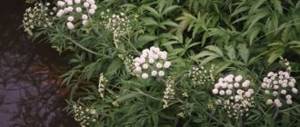Extracurricular activity in the Russian language - the game “Field of Miracles” for grades 5-6.
The game “Field of Miracles” for lovers and connoisseurs of Russian folklore - 6th grade.
1.Greetings from the presenter
: – Good afternoon, dear experts of Russian folklore. The theme of today's game is words from everyday life, everyday life, legends, customs of the Russian people, words found in folklore works of Rus'
First tour.
Leading.
So, friends, the first three players of our “Field of Miracles” are entering the game. (Introduces the players.) Let's welcome the participants of the first round and wish them good luck. The question of the first round of “Field of Miracles” is as follows: Q.1. “A round and yellow vegetable, in many Russian fairy tales it signifies the sun. Give the name of this vegetable” (Turnip) (At the end of the first round, the presenter thanks the participants in the game and invites the winner to participate in the final game).
Second round
Participants of the second round of “Field of Miracles” are invited to the stage. (The presenter introduces the players by class and personal qualities). Leading:
Well, dear admirers of Russian folklore. We bring to your attention the second question of today's game. AT 2. In Russian folklore, what were the names of sorcerers and sages who were able to guess a person’s fate from the stars? Who are these soothsayers? (Magi)
Third round.
Presentation of the third trio. Leading:
Dear viewers and participants of the “Field of Miracles”, the moment has come to start the third round. I invite the players of the third three to take their place. Attention! Third round question. It is also associated with magic in Russian fairy tales, legends, and beliefs. AT 3. The spirits of rivers, streams and lakes, according to popular beliefs, could benefit a person and give him wealth and good luck. In the first week following Trinity, these spirits emerge from the waters onto the earth, swing on trees, and perform round dances in forest clearings. At this time, it costs them nothing to tickle the traveler to death or drag him to the bottom. Who are these spirits? (Mermaids). Well, dear viewers! Let's give a round of applause to the third winner of our game!
Playing with the audience.
Leading:
And now comes the solemn moment of playing with the audience. Each of those sitting in the hall can take a risk and win this competition of smart people! The coveted prize that the winner of the game with spectators will receive is in this box. So, the question: Q. - What can’t you finish with a spoon? (Sea). (Additional question for any unforeseen event: Q. - What was the name of any extraordinary miracle, unprecedented and incomprehensible phenomenon in Russian fairy tales? (Wonder).
Final game.
Leading:
I invite the winners of the first, second and third three to the decisive game! Let us once again greet our experts in Russian folklore and Russian antiquity. Dear finalists! Let me ask you a few questions.
Q. - Tell me, what household items from Russian antiquity do you know? Q.- How did Russian dishes differ from modern ones and what were they made of? Q. - What did the pillowcases, towels, bedspreads, and window curtains look like? Well, thank you. And now the question of the final game from the field of Russian life. AT 4. What was the name of the small towel used to wipe your face? (Wipe).
Game "Field of Miracles" for medicinal plants
Elena Maksimova
Game "Field of Miracles" for medicinal plants
Game " Field of Miracles "
Topic: “ Medicinal plants ”
Goal: to expand students’ knowledge about medicinal plants
Tasks:
1. Educational: familiarization with ways to preserve and strengthen your health with the help of useful plants ; broadening the horizons of students.
2.Developing: development of cognitive interest in nature; development of information search skills; development of group work skills and communication abilities; development of speech, attention, memory, thinking and creative abilities of students.
3. Educational: instilling a love for living nature; to the artistic word, education of a culture of behavior; fostering self-discipline, responsibility, goodwill and mutual assistance; nurturing self-confidence.
Rules of this game
almost the same as in its popular television version.
Each round of the game involves three players.
A word comes up.
During his next move, the player can either spin the reel or name the entire word.
If a player guesses the word, he immediately wins the round. If he doesn’t guess correctly, he’s out of the game.
After the reel stops, a certain number of points appear on it. The player must indicate the letter that, according to his assumption, is contained in the hidden word.
If there is such a letter, he receives the points dropped on the reel and makes a second move. If there is more than one letter in a word, the points are multiplied by the number of letters.
If there is no such letter, the turn goes to the next player.
In addition, there are additional sectors on the reel.
The BANKRUPT sector resets all points accumulated by the player and passes the turn to the next player.
The TURN TRANSITION sector also transfers the move, but the player’s points are retained.
The game ends when all the letters in the word are open.
The winner of the round is the one who discovered the last letter of the word.
QUALIFYING ROUND
Riddles about plants
• Until late autumn, bold glances are thrown at us
Her cheerful yellow eye through white eyelashes... (Chamomile.)
• Someone threw beads on the bushes under the leaves –
All clearings have blue dots near green pines. (Blueberry.)
• Red candle, white heart,
Give you aromatic tea and cure a sore throat. (Raspberries.)
• The flower was like honey when young, but when it grew old it became like smoke. (Dandelion.)
• A doctor grew up near the road - he treats sick legs. (Plantain.)
• Sandy heart, milky petals. (Chamomile.)
• White peas on a green stem. (Lilies of the valley.)
• is growing in the grass. (Strawberries.)
• is healthy , pleasant and aromatic,
Of course, not with cotton wool, but with... (mint)
.
• Whoever passes by makes every bow. (Strawberries.)
• I was green and small, then I became scarlet.
I turned black in the sun, and now I am ripe. (Currant.)
Riddle question for the first three players:
This plant has many different names: rejuvenator, vannik, forest tongue, hare's ears,
There are many legends, myths and beliefs about the origin of this plant :
Among Orthodox Christians, the appearance of this plant in the world is considered the result of the tears of Eve, mourning her expulsion from the Garden of Eden. Another Christian legend claims that this plant grew from the tears that the Virgin Mary dropped at the foot of the crucified Christ. In the language of flowers, it symbolizes humility, purity, modesty and a return to happiness.
An ancient Russian legend connects its appearance with the sea princess Magus. The tears of the princess, saddened by the fact that the young man Sadko gave his heart to the earthly girl Lyubava, fell to the ground and sprouted a beautiful and delicate flower - a symbol of purity, love and sadness.
Other legends say that lilies of the valley grew from beads from Snow White's scattered necklace. They serve as lanterns for gnomes. Little forest people live in them - elves, and sunbeams hide at night.
In Finland it is the state flower symbol. And in Holland there is a belief that newlyweds should plant them in their garden so that their love does not fade away from year to year, but, on the contrary, is reborn anew with each coming of spring.
Not only legends, tales, and poems were dedicated to the charming flower, holidays and festivities were organized in its honor.
They were used to make wedding bouquets for young brides, symbolizing youth and purity.
Since the 17th century, the French have celebrated this plant ; it is considered a symbol of love. If a girl pins a flower, given by a boy, to her hair or dress, it means that she agrees to get married; if she throws it on the ground, it means that his proposal is not accepted. (LILY OF THE VALLEY)
Riddle question for the second three players
This plant is associated with Christian legends. It was considered the tree of the Virgin Mary; they said that the Mother of God rested on it, descending from heaven to Earth. Icons and icons were hung on it. According to legends, it covered the Virgin Mary and the little Christ with its branches during their flight to Egypt. This tree is rich in miracles : they say that if you stand under it for a long time during flowering, you can see an angel.
In ancient times, these revered trees were forbidden to be cut down, broken or desecrated. It was believed that if a person plucked a branch from it, his horse would definitely get sick, and for recovery it was necessary to return the branch to its place. They were afraid to cut down this tree because they believed that the person would die or someone in his family would die. There were legends about "bleeding"
trees that, once cut down, began to leak sap that could not be stopped until the sun set. It was considered a talisman, an amulet; people planted it near houses and hid under it during a thunderstorm, since lightning does not strike it.
It, as a wonderful tree, also appears in a Northern Russian fairy tale (similar to the fairy tale about the goldfish)
: it talks about how a man who was trying to cut down a tree in the forest was stopped by his voice; it asked not to cut him down, but in return promised to fulfill his every desire; by order of his wife, he demanded wealth from him, but when he asked to make everyone afraid of him and his wife, the tree turned them both into bears.
Come see him every day for a week, two or three. It will calm, heal and strengthen. It symbolizes friendship, so conversations under its crown are very intimate.
Widely used in the economic activities of Russian peasants.
They said that this tree “puts shoes on”
peasants
Cups and ladles, dishes and trays, sleighs and carts, jewelry and souvenirs were made
from the wood of this plant An infusion of flowers is used to gargle for sore throat. The best honey is considered to be that collected from the flowers of this plant .
(LINDEN)
Riddle question for the third three players
Legend: One day the flower goddess descended to earth. She wandered for a long time through fields and forest edges, through gardens and forests, wanting to find her favorite flower. The first one she encountered was a tulip. The Goddess decided to talk to him:
- What are you dreaming about, Tulip? she asked.
Tulip, without hesitation, answered:
“I would like to grow in a flowerbed near an ancient castle, covered with emerald grass.” Gardeners would look after me. Some princess would adore me. Every day she would come up to me and admire my beauty. The tulip's arrogance made the goddess feel sad. She turned and wandered on. Soon she came across a rose on her way.
- Could you become my favorite flower, Rose? - asked the goddess.
- If you sit me near the walls of your castle so that I can weave them. I am very fragile and delicate, I cannot grow anywhere . I need support and very good care. The goddess did not like the rose's answer and she moved on. Soon she came to the edge of the forest, which was covered with a purple carpet of violets.
—Would you become my favorite flower, Violet? - asked the goddess, looking with hope at the small graceful flowers.
- No, I don’t like attention. I feel good here, on the edge, where I am hidden from prying eyes. The stream waters me, the mighty trees shield me from the hot sun, which could damage my deep, rich color. In despair, the goddess ran wherever her eyes were looking and almost stepped on a bright flower.
— Do you like living here? she asked.
— I like to live wherever there are children. I love to hear their noisy games, I love to watch them run to school. I could settle down anywhere: along the roadsides, in courtyards and city parks. Just to bring joy to people.
The goddess smiled:
- Here is the flower that will be my favorite. And now you will bloom everywhere from early spring until late autumn. And you will be the children's favorite flower.
Since then, these flowers bloom for a long time and in almost any conditions.
People call this plant differently : kulbaba, zubnik, svetik, puffy, soldiers, milkman, milker, air flower, butter flower, March bush.
The root is used to improve appetite. Warts are removed with juice.
In folk medicine, a tincture of the roots is drunk for pulmonary tuberculosis, rheumatism, and abdominal pain. (DANDELION)
Riddle question for the fourth trio of players
In Russia it was called “boil grass”
.
In autumn, this plant produces small sticky seeds. There are a lot of them - up to 60 thousand pieces. They are easily and quickly attached to the shoes of passersby, the paws of animals and go on a “travel”
.
So, on the boots of Columbus's sailors, its seeds came to America. The Indians, noticing the appearance of a new plant after the arrival of Europeans, called it “the white man’s trace
.
The plant is very tenacious : “They hit it with a boot, they hit it with a wheel, and hit it with a brick, it doesn’t matter at all,”
says the popular proverb. Legends tell about its healing properties.
This is one of the most ancient medicinal plants . It was collected in China for medicinal purposes more than 3 thousand years ago. The ancient Greeks and Romans used the seeds for inflammatory conditions of the stomach and intestines. It was used by famous doctors Hippocrates and Galen. Avicenna believed that it was extremely good for treating stomach ulcers. Avicenna also used the leaves as a wound-healing and hemostatic agent.
Juice from fresh leaves is drunk for stomach diseases, bronchitis, bronchial asthma, whooping cough, pulmonary tuberculosis, headaches, toothaches, and earaches. An infusion of leaves is used for diseases of the oral cavity, bruises, wounds, burns, and acne. The juice of the leaves in diluted form is used to gargle and wash the eyes during inflammatory processes. It’s not for nothing that birds peck at the seeds of this plant - they contain a lot of vitamins, bitter and tannins, which have a positive effect on the digestive system.
___
There is a legend about how the wound-healing properties of this plant . One day, two snakes, located on the road, were basking in the sun. Suddenly a cart came around the bend. One snake managed to crawl out of the way, but the other lingered and the wheel ran over it. The people sitting in the cart saw how the first snake, which remained unharmed, crawled away, but soon returned with a leaf of the plant , with which it healed the victim. This incident seemed to prompt people to think about the possibility of using the plant to treat wounds . (PLANTAIN)
Riddle question for playing with the audience
A long time ago, when man had not yet called himself the king of nature, he dedicated poems and legends to this plant . One such legend has reached us: a poor Cossack girl lived in a distant village. Her only wealth was her extraordinary beauty. She fell in love with a young Cossack, unfortunately also poor. The young people swore true love for each other, but trouble was already hanging over them. The village ataman noticed a beautiful girl and began to pursue her, and the time came for the young Cossack to go to military service. The beauty responded with hatred to all the ataman’s advances, but this did not stop the villain, and on one of the dark nights his servants stole the girl from her parents’ house. He kept her in prison for a long time, but on the wedding day she managed to escape into the nearest forest. She remembered happy meetings with her beloved, her heart could not stand the suffering and torment and life left her. And at the site of her death, a lush bush with soft pink fragrant flowers grew. One day the ataman saw a beautiful bush and wanted to break a flowering branch, but they all instantly became covered with thorns. And in the fall, bright red fruits that looked like drops of blood appeared on these branches. Only a kind person can pluck them. Good people collect these fruits, drink tea from them, and this tea restores their vigor and health.
Since man began to collect and use wild fruits for food and treatment, it has become one of the most famous and familiar plants . medicines and paints were extracted from it , beautiful flowers and fruits served as decoration, and its spines were used as protection.
Many nations wove garlands from its flowers for brides, poets, heroes and rulers; women and girls decorated themselves with beads from bright fruits; it was a participant in public events. Among the Slavic peoples, this plant symbolizes beauty, youth, love and strong masculinity.
Riddles about this plant :
- The tree is Latin, the paws are heroic, the claws are devilish.
- There is a tree, a Khan’s tree, a Shamakhan dress, angelic flowers, devilish claws.
- He’s sitting on a stick in a red shirt, his belly is full - full of stones.
(ROSE HIP)
Riddle question for the Super Game.
The popular names of this plant are: overpowering grass, balabolka, floating fish, bliskalka, white hens.
Rumor ascribes magical properties to this plant . It was endowed with the properties to protect people, it could give strength to overcome the enemy, protect them from troubles and misfortunes, but it could also destroy the one who sought it with unclean thoughts. It was placed in an amulet and worn as an amulet.
This is one of the most beautiful plants . The flowers are large, up to 20 cm in diameter. In ancient times it was considered a symbol of beauty and mercy. These plants grow in ponds with standing or slowly flowing water at a depth of up to 2 meters. In Slavic fairy tales, the idea of these plants is associated with the mysterious image of a mermaid.
Scandinavian legends say that the leaves and flowers of these plants serve as boats for little elves.
The legend of the North American Indians says that the two stars Polaris and Vespers argued among themselves who would get the arrow that the great Indian chief shot into the sky and collided in flight . From their sparks these plants .
They are protected by law, since there are very few of them left in the reservoirs of rivers and lakes. They bloom for a long time, from late May to August. In folk medicine, flowers and rhizomes are used to treat insomnia, kidney disease, in the treatment of purulent wounds, and the decoction is used to wash the hair for hair loss. If you come to the lake early in the morning, you can watch these flowers emerge from the water. This is an unforgettable sight! Something begins to rise from the depths of the lake, and a large bud appears on the surface. In a matter of minutes it turns into a beautiful white flower. There is another one nearby, a little further away. What’s surprising is that the buds emerge just before sunrise, and open as soon as the sun’s rays touch the surface of the water. At noon they open all their petals. Then their flowers begin to gradually close and the flower looks like an unopened bud. And here something interesting happens: the closed water lily flowers begin to slowly sink into the water. These lash-stems, shortening, draw the flowers along with them. They love the sun very much, a little clouds will come and they slowly begin to close.
(WATER LILY)
Reminder for collector of medicinal plants
• Medicinal plants are collected in sunny, dry weather: leaves and stems - during flowering, flowers - at the beginning of flowering, fruits - during the period of full ripening, roots - in autumn.
• Do not collect dusty, dirty or diseased plants .
• Do not collect plants near roads and industrial enterprises.
• Do not take medicinal plants by mouth , as many of them are poisonous.
• Plants cannot be pulled out ; they must be cut with a knife. The roots need to be dug up.
• Dry medicinal plants immediately in a well-ventilated place
• medicinal plants yourself in gardens and school plots - for example: chamomile, sage, valerian, yarrow, motherwort.
plants in nature that cannot be smelled, taken into the mouth, or picked. They are poisonous!
• Plant poisons in small doses are used as medicine .
Unfamiliar plants CANNOT :
Tear! To sniff! Put it in your mouth!





